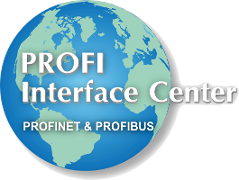PROFINET is a mechanism to exchange data between controllers and devices. Controllers could be PLCs, DCSs, or PACs (Programmable Logic Controllers, Distributed Control Systems, or Programmable Automation Controllers.). Devices could be I/O blocks, vision systems, RFID readers, drives, process instruments, proxies, or even other controllers.
Fast and Deterministic
PROFINET exchanges data quickly and deterministically. Required speeds vary depending on the application; process instruments update in hundreds of milliseconds, factory devices provide quicker updates (<10milliseconds), and motion control synchronization is even more demanding. Determinism means the messages arrive when they’re supposed to.
Note that competing protocols are not as fast or deterministic, or they are closed networks. Modbus TCP uses TCP which requires that a virtual connection is established between the two devices, then messages must pass through the TCP/IP stack. EtherNet/IP uses UDP so messages must pass through the UDP/IP stack. Time through the stack is variable reducing determinism in addition to the speed loss. EtherCAT is deterministic but is a closed network.
PROFINET Data
PROFINET exchanges data including quality and asset management information. You get more than the data, you know if the data is good. You know if maintenance will be required without waiting for something to break(proactive maintenance). PROFINET exchanges data in a predefined arrangement. It can arrange the data such that all the parameters are always in the same place, allowing devices to be changed from one vendor’s to another’s without any user interaction required. Process instruments, drives, energy measurements, and many other common devices have what we call Application Profiles to accomplish this.
There’s more to PROFINET than this simple definition provides. Read the System Description for more complete coverage.
 Continue your education by completing a PROFINET Certified Network Engineer Course.
Continue your education by completing a PROFINET Certified Network Engineer Course.
These certification classes are intense, hands-on courses. You will learn how the underlying technology works from the application to the frame level. After passing both a practical and written exam, you become certified.
For more information, contact us or visit our website.